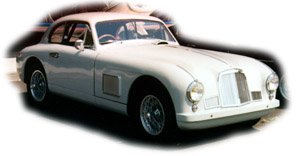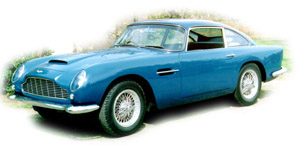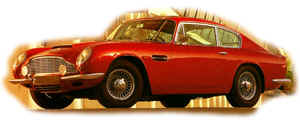|
From
1951 until its demise in 1973, the inline 6 cylinder engine was the mainstay of
the Aston range. The first 2.6 litre engines were based on a W.O. Bentley
design. Progressively developed and enlarged, the last was produced in 1959
measuring 2.9 litres. It was superceded by a Tadek Marek designed 3.7
litre, twin overhead camshaft, all-alloy unit in 1958. This engine also
saw substantial development, it's final form being 4.0 litres in 1973. As
was to become usual Aston tradition the Vantage derivative boasted higher power levels,
more development and higher prices..
|
|
The "Vantage" first appeared in the sales brochures of January 1951, in the
guise of a more powerful engine option for the DB mk II ( as the DB2 was first
known). For over 38 years the origin of the
name had remained obscure until a chance meeting at Aston Martin Lagonda in 1997.
A tour of the works had been organised by a young Mr. Robertson for
himself and his father, an ex-Aston employee from the Feltham days. As it transpired
Robertson Sr. had in fact penned the "Vantage" moniker. Alan Robertson,
newly arrived from the David Brown parent company in Huddersfield, shared an office with
John Wyer at Feltham, both having arrived at the same time in early 1950.
|

The first: db2 Vantage LML/50/19
|
 The name
"Vantage" was chosen after leafing through a thesaurus looking for suitable tags
for higher performance variants of the then current model, the DB Mk II. Offering
125bhp, versus 105 bhp for the standard engine, Vantage represented the tuned state for
Aston Martin's fine handcrafted automobiles and was easily distinguished by a
"V" in the engine number and obviously higher levels of performance.
The name
"Vantage" was chosen after leafing through a thesaurus looking for suitable tags
for higher performance variants of the then current model, the DB Mk II. Offering
125bhp, versus 105 bhp for the standard engine, Vantage represented the tuned state for
Aston Martin's fine handcrafted automobiles and was easily distinguished by a
"V" in the engine number and obviously higher levels of performance.
|
|
Interest in marketing the name had waned by 1953 when the Vantage engine became
standard issue on the DB2/4, with no mention of it appearing in sales information, the
"V" in the engine number the only indication. It wasn't until early 1962
that the Vantage name appeared once again in Aston's marketing literature.
|

db4 Vantage DB4/983/R
|
 For the first time
"Vantage" appeared as a distinct model name in the form of the DB4 Vantage. The
Series IV DB4 was the recipient of the name; however, it represented more than just an
uprated engine specification. Visually it was distinguished from
the standard car by a restyled front-end with sloping faired-in headlights. Until
the advent of the V8 Vantage in 1977, these were the only Vantage models to carry body
modifications distinct from the standard car.
For the first time
"Vantage" appeared as a distinct model name in the form of the DB4 Vantage. The
Series IV DB4 was the recipient of the name; however, it represented more than just an
uprated engine specification. Visually it was distinguished from
the standard car by a restyled front-end with sloping faired-in headlights. Until
the advent of the V8 Vantage in 1977, these were the only Vantage models to carry body
modifications distinct from the standard car.
|

db5 Vantage

db6 mk2 Vantage
|
 The classic,
single-headlight AM V8 saloon (no longer a 'DB', the company's post-war savior David Brown
having sold the company in February 1972) appeared in May of 1972 and alongside it the AM
Vantage, a tuned six cylinder car rather than a Vantage version of the V8. It
represented a departure from custom as Vantage was usually reserved for the tuned version
of the standard production series of car. This was unusual in the fact that no standard
six cylinder car was available. It was to be another five years - and after another
change of ownership - before the first V8 Vantage joined the range.
The classic,
single-headlight AM V8 saloon (no longer a 'DB', the company's post-war savior David Brown
having sold the company in February 1972) appeared in May of 1972 and alongside it the AM
Vantage, a tuned six cylinder car rather than a Vantage version of the V8. It
represented a departure from custom as Vantage was usually reserved for the tuned version
of the standard production series of car. This was unusual in the fact that no standard
six cylinder car was available. It was to be another five years - and after another
change of ownership - before the first V8 Vantage joined the range.
|
copyright
2001
AstonMartinVantage.com & V8Vantage.com

|